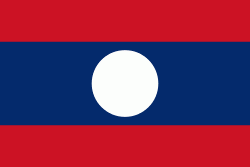Kaleum District (Muang Khaleum)
Kaleum is a district (muang) of Sekong province in southeastern Laos. In 2013, more than 100 families who inhabited the district were displaced by the construction of the Sekong 4 Dam.
In February 2021, the Lao government announced that two lignite-fired power plants will constructed in Sekong Province, one of them in Kaleum District. Work is to begin in 2021 and be completed by 2025. The electricity generated will be sold to Cambodia for 7.2 US cents per kWh. The Kaleum plant will be built by Phonesack Group. It will have an installed capacity of 1,800 MW. The company will invest between US$3–4 billion, including the construction of transmission lines to export electricity to Cambodia. The government claims that coal reserves adjacent to the plant are sufficient to power it for the entire 25-year concession period.
In February 2021, the Lao government announced that two lignite-fired power plants will constructed in Sekong Province, one of them in Kaleum District. Work is to begin in 2021 and be completed by 2025. The electricity generated will be sold to Cambodia for 7.2 US cents per kWh. The Kaleum plant will be built by Phonesack Group. It will have an installed capacity of 1,800 MW. The company will invest between US$3–4 billion, including the construction of transmission lines to export electricity to Cambodia. The government claims that coal reserves adjacent to the plant are sufficient to power it for the entire 25-year concession period.
Map - Kaleum District (Muang Khaleum)
Map
Country - Laos
 |
 |
| Flag of Laos | |
Present-day Laos traces its historic and cultural identity to Lan Xang, which existed from the 13th century to the 18th century as one of the largest kingdoms in Southeast Asia. Because of its central geographical location in Southeast Asia, the kingdom became a hub for overland trade and became wealthy economically and culturally. After a period of internal conflict, Lan Xang broke into three separate kingdoms: Luang Phrabang, Vientiane and Champasak. In 1893, the three territories came under a French protectorate and were united to form what is now known as Laos. It briefly gained independence in 1945 after Japanese occupation but was re-colonised by France until it won autonomy in 1949. Laos became independent in 1953, with a constitutional monarchy under Sisavang Vong. A post-independence civil war began, which saw the communist resistance, supported by the Soviet Union, fight against the monarchy that later came under influence of military regimes supported by the United States. After the Vietnam War ended in 1975, the communist Pathet Lao came to power, ending the civil war. Laos was then dependent on military and economic aid from the Soviet Union until its dissolution in 1991.
Currency / Language
| ISO | Currency | Symbol | Significant figures |
|---|---|---|---|
| LAK | Lao kip | â‚ | 2 |
| ISO | Language |
|---|---|
| EN | English language |
| FR | French language |
| LO | Lao language |















